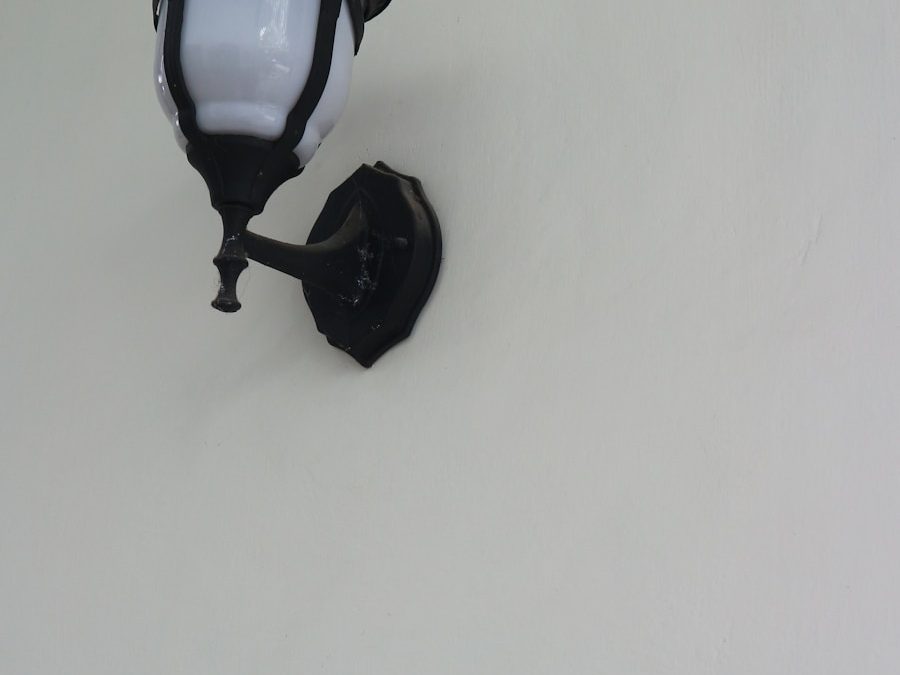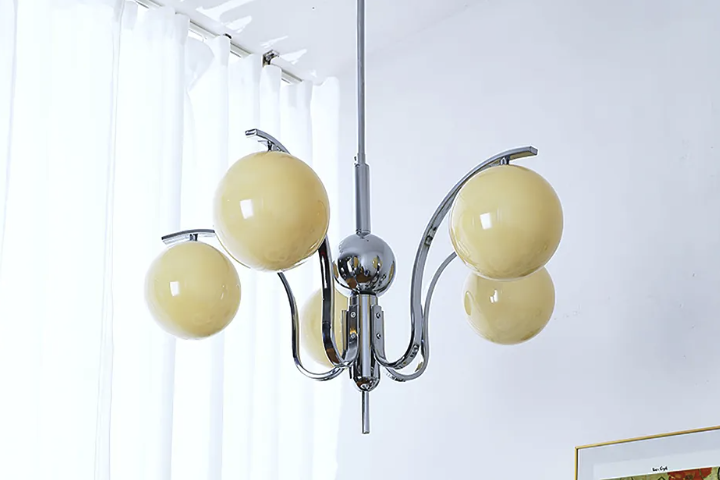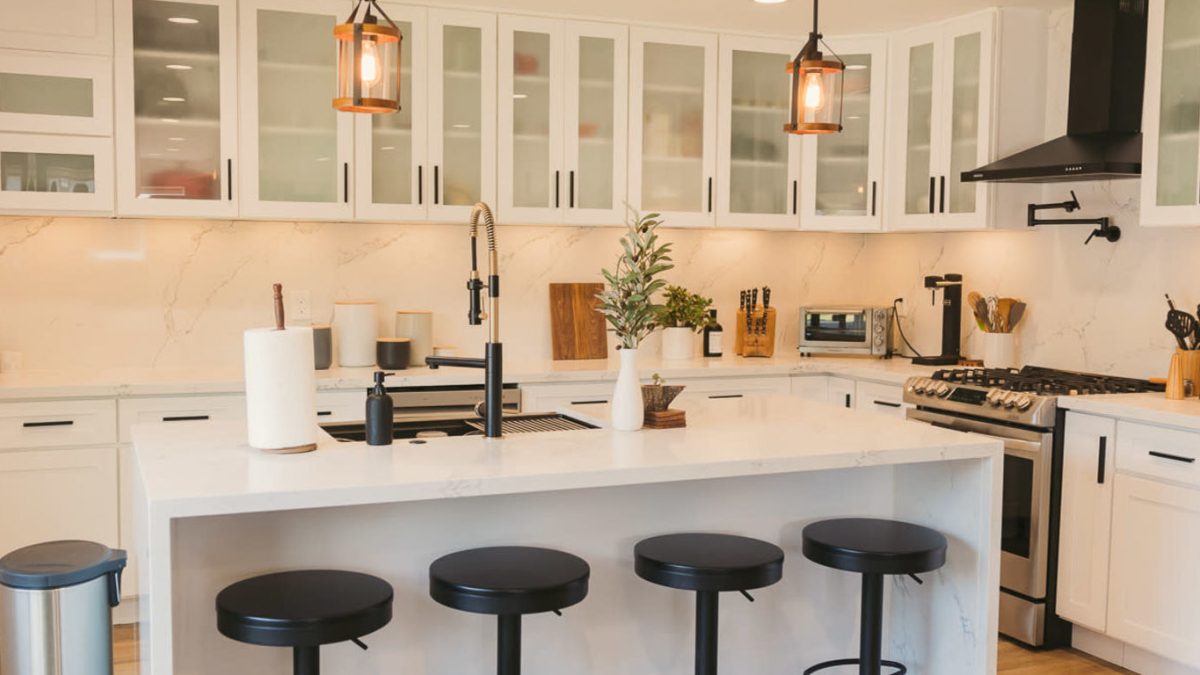
Versatile Upper and Lower Wall Lamps for Any Space
Upper and lower wall lamps are increasingly recognized for their versatility in both residential and commercial spaces. These fixtures serve dual purposes: they provide ambient lighting while also enhancing the aesthetic appeal of a room. Upper wall lamps, typically mounted higher on the wall, cast light upwards, creating a soft glow that can make a space feel larger and more inviting.
Conversely, lower wall lamps are positioned closer to the ground, directing light downwards, which can create a cozy atmosphere or highlight specific areas such as artwork or architectural features. This dual functionality allows designers and homeowners to manipulate the mood and perception of a space effectively. The adaptability of upper and lower wall lamps extends beyond their placement; they can be used in various styles and settings.
For instance, in a modern minimalist home, sleek, unobtrusive wall lamps can complement the clean lines and open spaces. In contrast, in a rustic setting, more ornate fixtures can add character and warmth. The ability to choose from a wide range of designs, materials, and finishes means that these lamps can fit seamlessly into any decor style, from industrial chic to traditional elegance.
This versatility makes them an essential element in contemporary interior design.
Choosing the Right Upper and Lower Wall Lamps for Different Spaces
Selecting the appropriate upper and lower wall lamps for specific spaces requires careful consideration of both functionality and aesthetics. In living rooms, for example, upper wall lamps can be used to create a warm ambiance that encourages relaxation and conversation. When choosing these fixtures, it is essential to consider the height at which they will be installed; ideally, they should be positioned to illuminate the seating area without causing glare.
Additionally, dimmable options can enhance the versatility of the lighting, allowing homeowners to adjust the brightness according to the time of day or occasion. In contrast, lower wall lamps are particularly effective in hallways or staircases where safety is a concern. These fixtures can provide necessary illumination while also serving as decorative elements.
When selecting lower wall lamps for these areas, it is crucial to ensure that they are bright enough to light the path but not so bright that they create harsh shadows. Moreover, choosing fixtures with a design that complements the overall decor of the home will ensure that they enhance rather than detract from the space’s aesthetic appeal.
Creative Ways to Use Upper and Lower Wall Lamps in Interior Design
The creative application of upper and lower wall lamps can significantly elevate interior design. One innovative approach is to use upper wall lamps to create a layered lighting effect. By combining these fixtures with other light sources such as floor lamps or table lamps, designers can achieve a dynamic interplay of light and shadow that adds depth to a room.
For instance, in a reading nook, an upper wall lamp can provide general illumination while a nearby floor lamp offers focused light for reading. This combination not only enhances functionality but also creates an inviting atmosphere. Another creative use of lower wall lamps is to highlight architectural features or artwork.
By strategically placing these fixtures near a piece of art or along textured walls, homeowners can draw attention to these elements while adding an element of drama to the space. For example, installing lower wall lamps on either side of a large painting can create a gallery-like effect, making the artwork the focal point of the room. Additionally, using colored bulbs or shades in lower wall lamps can introduce an unexpected pop of color that complements the overall color scheme of the room.
Tips for Installing Upper and Lower Wall Lamps in Various Rooms
Proper installation of upper and lower wall lamps is crucial for maximizing their effectiveness and ensuring safety. When installing upper wall lamps in living areas or bedrooms, it is advisable to mount them at eye level when standing or sitting. This height not only provides optimal illumination but also prevents glare from directly viewing the bulb.
In spaces with high ceilings, adjustable wall lamps can be particularly beneficial as they allow for flexibility in directing light where it is needed most. For lower wall lamps, placement is equally important. In hallways or staircases, these fixtures should be installed at a height that ensures they are visible but not obstructive.
A common guideline is to position them approximately 12-18 inches above the floor. This height provides adequate lighting for safe navigation while also creating an inviting ambiance. Additionally, ensuring that the fixtures are spaced evenly along the walls will create a cohesive look and prevent dark spots in the lighting design.
The Benefits of Using Upper and Lower Wall Lamps in Different Environments
The benefits of incorporating upper and lower wall lamps into various environments extend beyond mere aesthetics; they also enhance functionality and comfort. In residential settings, these fixtures can significantly improve the quality of light in a room, making it more conducive to activities such as reading or entertaining. The ability to direct light where it is needed most allows homeowners to create tailored lighting solutions that meet their specific needs.
In commercial environments such as restaurants or offices, upper and lower wall lamps play a vital role in establishing ambiance and improving productivity. In restaurants, for instance, soft upper lighting can create an intimate dining experience while lower wall lamps can highlight menu boards or special features within the space. In office settings, well-placed wall lamps can reduce eye strain by providing adequate task lighting without overwhelming brightness.
This thoughtful approach to lighting design not only enhances the overall experience but also contributes to employee satisfaction and customer enjoyment.
How to Coordinate Upper and Lower Wall Lamps with Other Lighting Fixtures
Coordinating upper and lower wall lamps with other lighting fixtures is essential for achieving a harmonious lighting scheme within any space. One effective strategy is to consider the overall style and finish of all light sources in a room. For example, if upper wall lamps feature a sleek metallic finish, it would be beneficial to choose complementary fixtures such as pendant lights or chandeliers that share similar materials or colors.
This creates a cohesive look that ties together various elements within the space. Another important aspect of coordination involves balancing different types of lighting—ambient, task, and accent—throughout the room. Upper wall lamps can serve as ambient lighting while lower wall lamps may provide task lighting for specific areas like reading corners or workspaces.
By ensuring that these different types of lighting work together rather than compete against each other, designers can create a well-rounded lighting experience that enhances both functionality and aesthetics.
Maintenance and Care for Upper and Lower Wall Lamps
Maintaining upper and lower wall lamps is essential for ensuring their longevity and optimal performance. Regular cleaning is one of the most straightforward yet effective ways to keep these fixtures looking their best. Dust accumulation can dull finishes and reduce light output; therefore, using a soft cloth or microfiber duster to wipe down surfaces regularly is recommended.
For glass shades or decorative elements, gentle cleaning solutions may be necessary to avoid scratching or damaging delicate materials. In addition to cleaning, it is important to periodically check the electrical components of wall lamps for any signs of wear or damage. This includes inspecting wiring for fraying or exposed areas and ensuring that bulbs are functioning correctly.
Replacing burnt-out bulbs promptly not only maintains the aesthetic appeal but also ensures safety by preventing overheating issues associated with faulty fixtures. By taking these simple maintenance steps, homeowners can enjoy their upper and lower wall lamps for years to come.
Exploring Different Styles and Designs of Upper and Lower Wall Lamps
The world of upper and lower wall lamps offers an extensive array of styles and designs that cater to diverse tastes and preferences. From sleek modern designs featuring clean lines and minimalistic aesthetics to ornate vintage-inspired fixtures adorned with intricate details, there is something for every decor style. For instance, industrial-style wall lamps often incorporate materials like metal and exposed bulbs, making them ideal for lofts or contemporary spaces seeking an edgy vibe.
On the other hand, traditional designs may feature classic elements such as sconces with fabric shades or antique finishes that evoke a sense of nostalgia. These fixtures can add warmth and character to spaces like dining rooms or entryways where creating an inviting atmosphere is paramount. Additionally, there are eco-friendly options available that utilize sustainable materials or energy-efficient LED technology, appealing to environmentally conscious consumers looking to reduce their carbon footprint while still enjoying stylish lighting solutions.
The diversity in styles also extends to functional features such as adjustable arms or integrated dimmers that enhance usability while maintaining aesthetic appeal. Whether one prefers bold statement pieces or subtle accents, exploring the vast range of upper and lower wall lamp designs allows individuals to find the perfect fit for their unique spaces.


